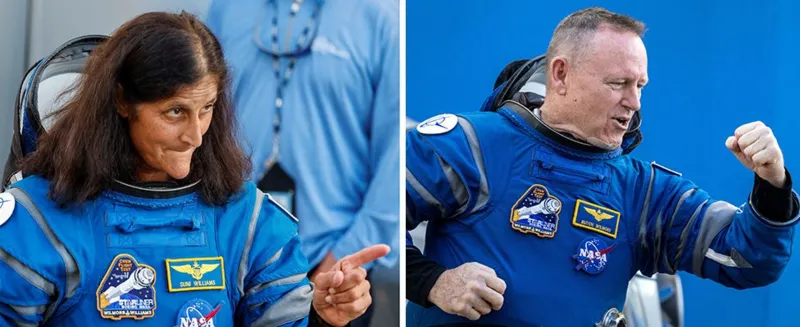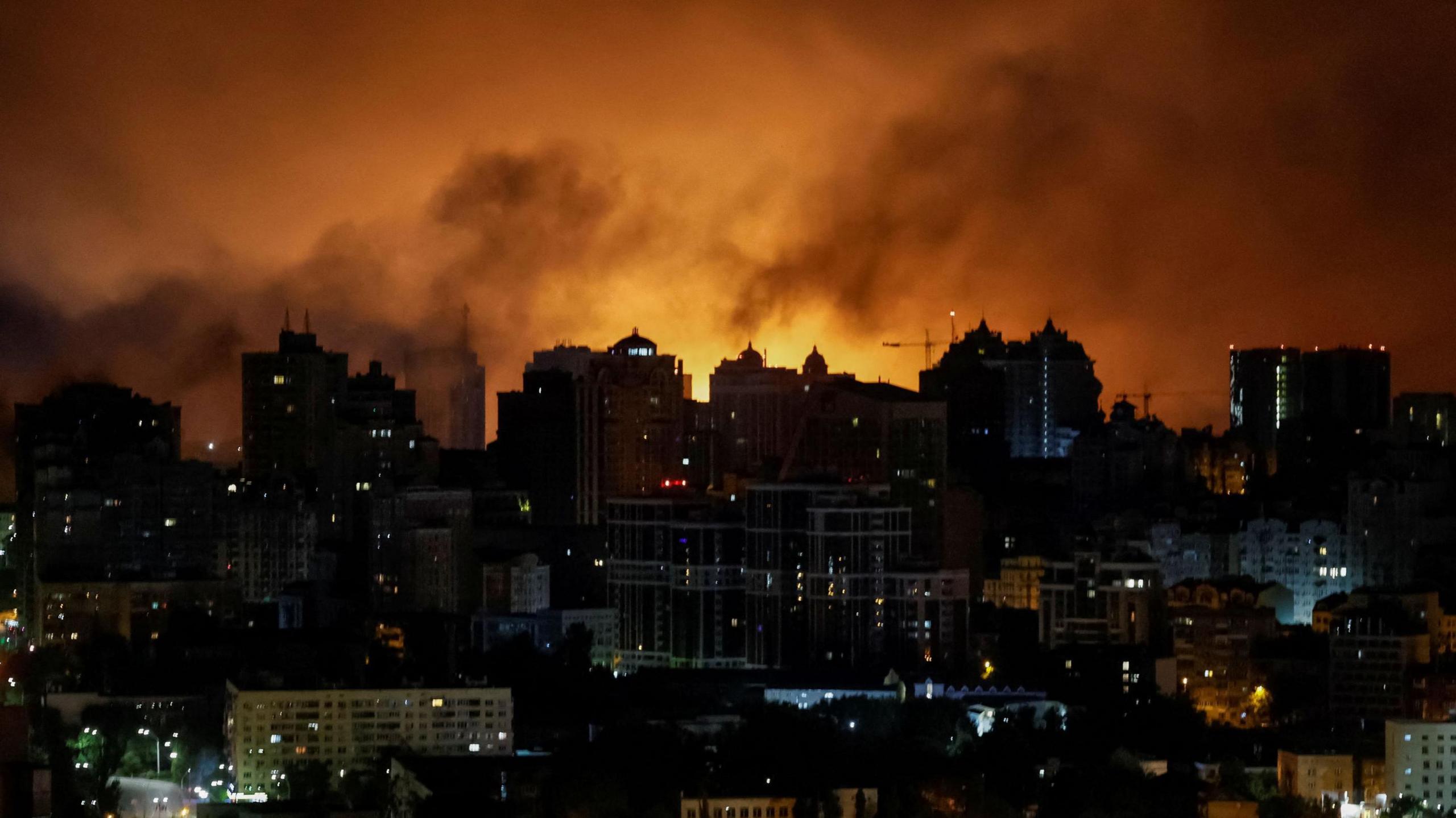Boeing launches long-delayed astronaut capsule
The American Boeing company has launched its Starliner capsule towards the International Space Station (ISS) with two Nasa astronauts aboard.

It's the first time the vehicle has been entrusted to carry people after coming through a long and tortuous development programme.
Butch Wilmore and Suni Williams will be testing the capsule on a mission that's expected to last just over a week.
Starliner is scheduled to dock with the space station on Thursday.
The capsule went up from Cape Canaveral Space Force Station in Florida, riding a United Launch Alliance Atlas rocket.
The 12-minute powered ascent looked flawless.
Moments before lift-off, Commander Wilmore called out to thank all those who had worked to make the mission possible. Alluding to past difficulties, he said: "When the going gets tough - and it often does - the tough get going, and you have."
Starliner's pilot Suni Williams chimed in: "Go 'Calypso'! (the name of the capsule). Take us to space and back."
Starliner now has to raise itself to the orbit of the ISS, which circles the Earth at an altitude of roughly 400km (250 miles).
In the 24 hours this will take, Wilmore and Williams plan to put the vehicle through its paces, including taking manual control of the flight systems.
This mission is a critical venture for manufacturer Boeing, which has been under pressure after a series of safety incidents on its aeroplanes.
Starliner, likewise, has encountered numerous technical issues that have delayed its planned crewed debut by almost a decade.
The most dramatic of these problems occurred on the capsule's first uncrewed test flight in 2019 when software errors forced the vehicle to abort its trip to the ISS. Nasa requested a second dummy run be conducted in 2022 to be sure the errors had been corrected.
Recent days have once again focussed on Starliner's readiness with the discovery of a small helium leak in the spacecraft's propulsion system.
Detailed analysis eventually led Boeing and Nasa to conclude the leak was not serious enough to hold up the launch.
Starliner was developed in response to Nasa's request for commercial options to get its astronauts into space.
Following the retirement of the famous shuttles in 2011, the agency wanted to move away from owning and operating vehicles to an arrangement where it could simply purchase the service - just like a company might outsource its IT needs or payroll.
The new approach was designed to save Nasa money it could then spend on ambitious plans to return people to the Moon.
The agency gave contracts to Boeing and SpaceX to help bring their capsules into service and then pay them for six operational missions. But whereas SpaceX was able to fly its crew flight test in 2020 and then complete six operational missions by March this year, Boeing is still at the stage of the initial crew flight test.
If Starliner can prove itself over the coming days, it will join SpaceX's Dragon capsule in the routine transport of astronauts, potentially as early as the beginning of next year.
"Right now, we have one provider giving us that access to the space station," top Nasa official Jim Free explained. "This will give us a second provider, which means if we have a problem with either, we have ways to get our crews to and from station, which helps keep the tempo that we've had for 23 years of having humans in low Earth orbit," the associate administrator said.
For Mark Nappi, the Boeing vice president who leads the company's commercial crew programme, it was a relief to finally see the mission get away.
"My boss was here today. My boss's boss was here today and my boss's boss's boss is here today. So obviously, it means a tonne to us," he told reporters.
Starliner is heading up to the space station with about 340kg (760lbs) of cargo.
A key supply item is a replacement pump for the system on the ISS that purifies urine back to drinking water.
Much of the cargo, however, is simply Boeing merchandise that will become memorabilia for this important test flight.
This includes mission patches, coins, silver Snoopy pens, American flags and a hard drive with about 3,500 pieces of artwork from children across the world.
If all goes to plan, Wilmore and Williams will return to Earth late next week.
The Starliner is designed to come back to land, using airbags to soften contact with the ground.
There are a number of places in the US southwest where the touchdown could be performed, but mission managers will wait to see local weather forecasts before making a final choice.
The earliest opportunity would be 14 June at the White Sands Missile Range in New Mexico.
"There's nothing magic about that date. A few days later, we have another set of opportunities as well," said Steve Stitch, Nasa's commercial crew programme manager.
-bbc







